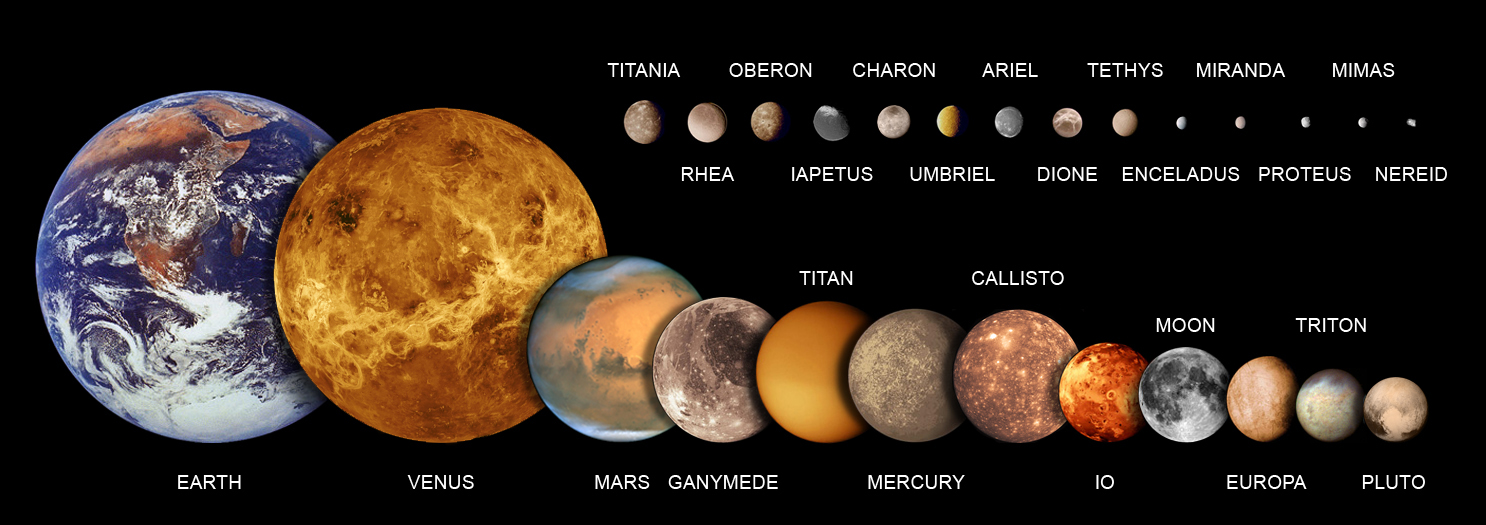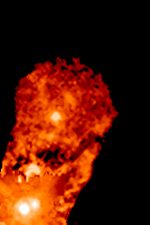|
2M1207
2M1207, 2M1207A or 2MASSW J12073346–3932539 is a brown dwarf located in the constellation Centaurus; a companion object, 2M1207b, may be the first extrasolar planetary-mass companion to be directly imaged, and is the first discovered orbiting a brown dwarf. 2M1207 was discovered during the course of the 2MASS infrared sky survey: hence the "2M" in its name, followed by its celestial coordinates. With a fairly early (for a brown dwarf) spectral type of M8, it is very young, and probably a member of the TW Hydrae association. Its estimated mass is around 25 Jupiter masses. The companion, 2M1207b, is estimated to have a mass of 3–10 Jupiter masses.Star: 2M1207 , ''Extrasolar Planets Encyclopaedia''. Accessed on line June 15, 2008. Still glowing red hot, it will shrink to a size slightly smaller than Jupiter as it cools over the nex ... [...More Info...] [...Related Items...] OR: [Wikipedia] [Google] [Baidu] |
2M1207b
2M1207b is a planetary-mass object orbiting the brown dwarf 2M1207, in the constellation Centaurus, approximately 170 light-years from Earth."The Distance to the 2M1207 System" , Eric Mamajek, November 8, 2007. Accessed on line June 15, 2008. It is one of the first candidate s to be directly observed (by imaging). It was discovered in April 2004 by the (VLT) at the |
Brown Dwarf
Brown dwarfs (also called failed stars) are substellar objects that are not massive enough to sustain nuclear fusion of ordinary hydrogen (hydrogen-1, 1H) into helium in their cores, unlike a main sequence, main-sequence star. Instead, they have a mass between the most massive gas giant planets and the least massive stars, approximately 13 to 80 Jupiter mass, times that of Jupiter (). However, they can deuterium burning, fuse deuterium (deuterium, 2H), and the most massive ones (> ) can lithium burning, fuse lithium (lithium-7, 7Li). Astronomers classify self-luminous objects by spectral classification, spectral class, a distinction intimately tied to the surface temperature, and brown dwarfs occupy types M, L, T, and Y. As brown dwarfs do not undergo stable hydrogen fusion, they cool down over time, progressively passing through later spectral types as they age. Despite their name, to the naked eye, brown dwarfs would appear in different colors depending on their temperatur ... [...More Info...] [...Related Items...] OR: [Wikipedia] [Google] [Baidu] |
Moving Cluster Method
In astrometry, the moving-cluster method and the closely related convergent point method are means, primarily of historical interest, for determining the distance to star clusters. They were used on several nearby clusters in the first half of the 1900s to determine distance. The moving-cluster method is now largely superseded by other, usually more accurate distance measures. Introduction The moving-cluster method relies on observing the proper motions and Doppler shift of each member of a group of stars known to form a cluster. The idea is that since all the stars share a common space velocity, they will appear to move towards a point of common convergence ("vanishing point") on the sky. This is essentially a perspective effect. Using the moving-cluster method, the distance to a given star cluster (in parsecs) can be determined using the following equation: :\mathrm = \mathrm(\theta) \frac where "θ" is the angle between the star and the cluster's apparent convergence poin ... [...More Info...] [...Related Items...] OR: [Wikipedia] [Google] [Baidu] |
Planetary-mass Object
A planetary-mass object (PMO), planemo, or planetary body is by geophysical definition of celestial objects any celestial object massive enough to achieve hydrostatic equilibrium (to be rounded under its own gravity), but not enough to sustain core fusion like a star. The purpose of this term is to refer to a broader range of celestial objects than the concept of planet, since many objects similar in geophysical terms do not conform to typical expectations for a planet. Planetary-mass objects can be quite distinguished in origin and location. Planetary-mass objects include dwarf planets, planetary-mass satellite or free-floating planemos, which may have been ejected from a system (rogue planets) or formed through cloud-collapse rather than accretion (sometimes called sub-brown dwarfs). Types Planetary-mass satellite The three largest satellites Ganymede, Callisto, and Titan are of similar size or larger than the planet Mercury; these and four more – Io, Moon, Europ ... [...More Info...] [...Related Items...] OR: [Wikipedia] [Google] [Baidu] |
European Southern Observatory
The European Organisation for Astronomical Research in the Southern Hemisphere, commonly referred to as the European Southern Observatory (ESO), is an intergovernmental organization, intergovernmental research organisation made up of 16 member states for ground-based astronomy. Created in 1962, ESO has provided astronomers with state-of-the-art research facilities and access to the southern sky. The organisation employs about 730 staff members and receives annual member state contributions of approximately €162 million. Its observatories are located in northern Chile. ESO has built and operated some of the largest and most technologically advanced telescopes. These include the 3.6 m New Technology Telescope, an early pioneer in the use of active optics, and the Very Large Telescope (VLT), which consists of four individual 8.2 m telescopes and four smaller auxiliary telescopes which can all work together or separately. The Atacama Large Millimeter Array observes the un ... [...More Info...] [...Related Items...] OR: [Wikipedia] [Google] [Baidu] |
Methods Of Detecting Exoplanets
Any planet is an extremely faint light source compared to its parent star. For example, a star like the Sun is about a billion times as bright as the reflected light from any of the planets orbiting it. In addition to the intrinsic difficulty of detecting such a faint light source, the light from the parent star causes a glare that washes it out. For those reasons, very few of the exoplanets reported have been observed directly, with even fewer being resolved from their host star. Instead, astronomers have generally had to resort to indirect methods to detect extrasolar planets. As of 2016, several different indirect methods have yielded success. Established detection methods The following methods have at least once proved successful for discovering a new planet or detecting an already discovered planet: Radial velocity A star with a planet will move in its own small orbit in response to the planet's gravity. This leads to variations in the speed with which the star mov ... [...More Info...] [...Related Items...] OR: [Wikipedia] [Google] [Baidu] |
2MASS
The Two Micron All-Sky Survey, or 2MASS, was an astronomical survey of the whole sky in infrared light. It took place between 1997 and 2001, in two different locations: at the U.S. Fred Lawrence Whipple Observatory on Mount Hopkins, Arizona, and at the Cerro Tololo Inter-American Observatory in Chile, each using a 1.3-meter telescope for the Northern and Southern Hemisphere, respectively. It was conducted in the short-wavelength infrared at three distinct frequency bands ( J, H, and K) near 2 micrometres, from which the photometric survey with its HgCdTe detectors derives its name. 2MASS produced an astronomical catalog with over 300 million observed objects, including minor planets of the Solar System, brown dwarfs, low-mass stars, nebulae, star clusters and galaxies. In addition, 1 million objects were cataloged in the ''2MASS Extended Source Catalog'' (''2MASX''). The cataloged objects are designated with a "2MASS" and "2MASX"-prefix respectively. Catalog The ... [...More Info...] [...Related Items...] OR: [Wikipedia] [Google] [Baidu] |
Astrophysical Journal
''The Astrophysical Journal'', often abbreviated ''ApJ'' (pronounced "ap jay") in references and speech, is a peer-reviewed scientific journal of astrophysics and astronomy, established in 1895 by American astronomers George Ellery Hale and James Edward Keeler. The journal discontinued its print edition and became an electronic-only journal in 2015. Since 1953 ''The Astrophysical Journal Supplement Series'' (''ApJS'') has been published in conjunction with ''The Astrophysical Journal'', with generally longer articles to supplement the material in the journal. It publishes six volumes per year, with two 280-page issues per volume. ''The Astrophysical Journal Letters'' (''ApJL''), established in 1967 by Subrahmanyan Chandrasekhar as Part 2 of ''The Astrophysical Journal'', is now a separate journal focusing on the rapid publication of high-impact astronomical research. The three journals were published by the University of Chicago Press for the American Astronomical Society un ... [...More Info...] [...Related Items...] OR: [Wikipedia] [Google] [Baidu] |
Jean Dalibard
Jean Dalibard (born 8 December 1958) is a French physicist, Professor at the École Polytechnique, member of the French Academy of Sciences and a researcher at the École Normale Supérieure. In 2009, Dalibard received the Blaise Pascal medal of the European Academy of Sciences for "his outstanding and influential works in atomic physics and quantum optics". In 2012, he received the Max Born Award and Davisson–Germer Prize. He was elected an international member of the American Philosophical Society in 2018. In 2020, he was honoured to be an international member of the National Academy of Sciences. See also * Quantum jump method References External links * Lecture A lecture (from Latin ''lēctūra'' “reading” ) is an oral presentation intended to present information or teach people about a particular subject, for example by a university or college teacher. Lectures are used to convey critical infor ...s ''Mécanique quantique'' [...More Info...] [...Related Items...] OR: [Wikipedia] [Google] [Baidu] |
Jet (astronomy)
An astrophysical jet is an astronomical phenomenon where outflows of ionised matter are emitted as an extended beam along the axis of rotation. When this greatly accelerated matter in the beam approaches the speed of light, astrophysical jets become relativistic jets as they show effects from special relativity. The formation and powering of astrophysical jets are highly complex phenomena that are associated with many types of high-energy astronomical sources. They likely arise from dynamic interactions within accretion disks, whose active processes are commonly connected with compact central objects such as black holes, neutron stars or pulsars. One explanation is that tangled magnetic fields are organised to aim two diametrically opposing beams away from the central source by angles only several degrees wide Jets may also be influenced by a general relativity effect known as frame-dragging. Most of the largest and most active jets are created by supermassive black holes (SMBH) ... [...More Info...] [...Related Items...] OR: [Wikipedia] [Google] [Baidu] |
T Tauri Stars
T Tauri stars (TTS) are a class of variable stars that are less than about ten million years old. This class is named after the prototype, T Tauri, a young star in the Taurus star-forming region. They are found near molecular clouds and identified by their optical variability and strong chromospheric lines. T Tauri stars are pre-main-sequence stars in the process of contracting to the main sequence along the Hayashi track, a luminosity–temperature relationship obeyed by infant stars of less than 3 solar masses () in the pre-main-sequence phase of stellar evolution. It ends when a star of or larger develops a radiative zone, or when a smaller star commences nuclear fusion on the main sequence. History While T Tauri itself was discovered in 1852, the T Tauri class of stars were initially defined by Alfred Harrison Joy in 1945. Characteristics T Tauri stars comprise the youngest visible F, G, K and M spectral type stars (). Their surface temperatures are similar to th ... [...More Info...] [...Related Items...] OR: [Wikipedia] [Google] [Baidu] |
Accretion Disk
An accretion disk is a structure (often a circumstellar disk) formed by diffuse material in orbital motion around a massive central body. The central body is typically a star. Friction, uneven irradiance, magnetohydrodynamic effects, and other forces induce instabilities causing orbiting material in the disk to spiral inward towards the central body. Gravitational and frictional forces compress and raise the temperature of the material, causing the emission of electromagnetic radiation. The frequency range of that radiation depends on the central object's mass. Accretion disks of young stars and protostars radiate in the infrared; those around neutron stars and black holes in the X-ray part of the spectrum. The study of oscillation modes in accretion disks is referred to as diskoseismology. Manifestations Accretion disks are a ubiquitous phenomenon in astrophysics; active galactic nuclei, protoplanetary disks, and gamma ray bursts all involve accretion disks. These disks ve ... [...More Info...] [...Related Items...] OR: [Wikipedia] [Google] [Baidu] |






